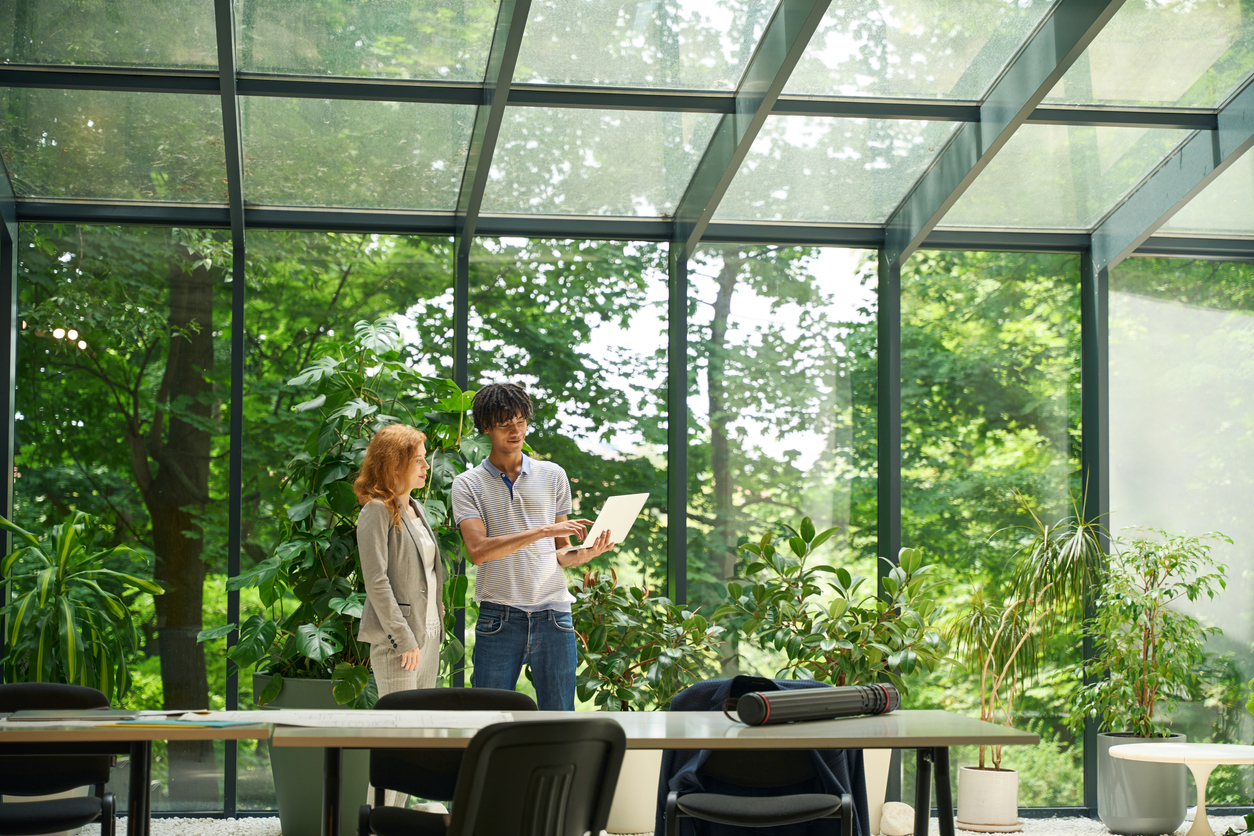Incorporating sustainability into home design is more than a trend — it’s a commitment to the planet and a healthier lifestyle. By blending biophilic design principles with sustainable practices, you can create an inviting and environmentally friendly home. Explore how you can transform your living space with these concepts while considering accessibility and affordability.

What Is Biophilic Design?
Biophilic design connects people with nature through architecture and interiors. The term stems from “biophilia,” which refers to humanity’s innate connection to the natural world.
Unlike traditional interiors, biophilic design prioritizes natural light, greenery, organic textures and spatial harmony. It’s a concept proven to enhance well-being, reduce stress and even boost productivity. The core principles of biophilic design include:
- Maximizing natural light: Strategic use of windows, skylights and reflective surfaces minimizes artificial lighting needs.
- Adding greenery: Incorporating plants and living walls fosters a vibrant and calming environment.
- Using native materials: Wood, stone and bamboo materials bring texture and warmth to interiors.
- Focusing on natural patterns: Organic shapes and biomorphic designs mimic the aesthetics of nature.
Why Choose Biophilic and Sustainable Design?
Biophilic and sustainable interiors offer benefits extending beyond aesthetics:
- Improved health and well-being: Biophilic interiors can improve air quality, reduce stress and enhance mood.
- Energy efficiency: Natural lighting and ventilation reduce energy consumption, cutting utility costs and lowering your carbon footprint.
- Eco-friendly materials: Sustainable materials, such as reclaimed wood or recycled glass, minimize environmental degradation.
5 Steps to Incorporate Biophilic Design Into Your Home
Adopting a biophilic design doesn’t require a full-scale renovation. Simple changes can make a significant difference:
1. Maximize Natural Light
Place mirrors strategically to reflect sunlight and brighten your space. Use light-colored curtains to allow daylight to filter through. If feasible, consider adding skylights to rooms with limited windows.
2. Introduce Indoor Plants
Houseplants, like weeping figs and peace lilies, enhance air quality and add natural beauty. For low-maintenance options, succulents or artificial moss walls work well.
3. Use Sustainable Materials
Choose furniture made from bamboo, rattan or reclaimed wood. Opt for nontoxic paints and finishes to minimize indoor air pollution.
4. Incorporate Water Elements
Indoor water features, like tabletop fountains, add tranquility and replicate the soothing sounds of nature.
5. Embrace Nature-Inspired Decor
To mimic the natural world, include organic patterns in textiles, wall art or rugs. Use earthy tones like greens, browns and blues to evoke serenity.
Green Roofs: Extending Biophilic Design Outdoors
Green roofs are an innovative way to enhance sustainability and biophilic design. These living roofs are covered with vegetation and offer ecological, economic and aesthetic advantages.
Green roofs consist of a waterproof membrane, soil layers and plants. They can be installed on flat or slightly sloped rooftops, transforming otherwise unused space into lush gardens. Here are their other ecological benefits:
- Enhanced air quality: Plants on green roofs release oxygen and filter pollutants, which helps improve urban air quality.
- Biodiversity support: These roofs provide habitats for pollinators like bees and butterflies, supporting local ecosystems.
- Improved energy efficiency: Green roofs are highly effective at cooling and can be up to 40 degrees cooler than traditional roofs. This can also help reduce the urban heat island effect, decreasing temperatures surrounding the roof, too.
- Stormwater management: Green roofing systems can reduce water flow by up to 65% by preventing stormwater runoff and purifying rainwater.
- Eco-friendly spaces: Green roofs can double as outdoor living areas, perfect for yoga, meditation or gardening.
Overcoming Challenges in Sustainable Design
Adopting sustainable practices may seem daunting, but these tips can help:
- Start small: Begin with easy changes like adding plants or switching to energy-efficient light bulbs.
- Budget wisely: Look for secondhand furniture or DIY decor to save money while reducing waste. Incorporate elements like bamboo and reclaimed pieces into your interior.
- Keep in the loop: Research local programs or incentives for sustainable home upgrades, such as tax credits for green roofs or energy-efficient windows. Also, use local resources to find decor or elements that can help you adhere to biophilic principles.
The Future of Sustainable Living
As climate concerns grow, sustainable interior design and architecture are becoming essential components of modern homes. These practices benefit the environment and improve personal well-being and property value.
Embracing these concepts fosters a deeper connection with nature while reducing your ecological footprint. Whether you start with a single houseplant or embark on whole-house installation, every step contributes to a more sustainable future.
Source link
Rose Morrison biofriendlyplanet.com


